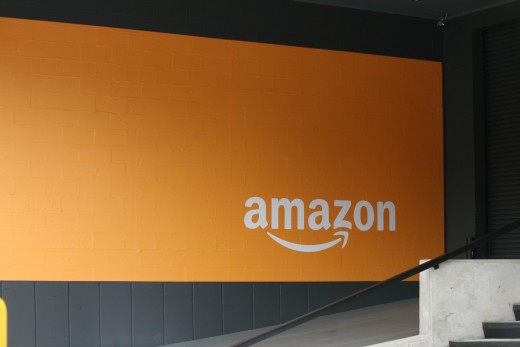
Employees expect great things from the companies they work for. Perhaps that’s why the Amazon exposé and rebuttal hit so close to home for so many of us. While Amazon’s management structure has been under the limelight and the company’s internal processes torn to pieces, our obsession over understanding what Amazon does with its employees behind closed doors is representative of the major shift happening in the workplace in front of our very eyes.
There are thousands of businesses facing the same challenge: figuring out how to tap the greatest potential from employees.
It’s almost ironic that we’re being so critical of one company when very few of us have figured out how to successfully increase alignment, encourage open feedback and ultimately get ideas to market. MIT researcher Donald Sull recently found that when asked to identify the single greatest challenge to executing their company’s strategy, 30% cite failure to coordinate across units, making that a close second to failure to align (40 percent).

“Alignment” for Amazon begins by distributing information on its 14 “leadership principles,” and open feedback between peers is encouraged so all ideas that make it to the next level are thoroughly contemplated. I’d argue those tactics are a pretty great place to start.
Across the board, Amazon employees and outsiders have reacted emotionally and critically to all of these tactics, which I believe is an indicator of the major shift we’re now experiencing around employee expectations for HR. We should open our eyes to this new era—one where high-growth companies prioritize coaching and individual feedback, and where employees can be themselves and pursue their own goals while remaining aligned with growing the company as a whole.
The power of coaching
Fortune 1000 companies ranging from Accenture to Netflix to Adobe have made big moves in recent months to nix the annual performance review, recognizing that employees need more individualized and regular feedback to perform their best. Millennials, the generation that will make up the majority of your workforce by the end of this year, crave feedback.
Annual or semi-annual reviews are too infrequent for all employees, but especially millennials who respond best with frequent, lightweight feedback signals. And while frequency and timing are important, the framing and delivery of feedback—positive or negative—can make a major impact on its effectiveness.
Joanne Sujanski’s article “Don’t be so touchy!—The Secret to Giving Feedback to Millennials” explains how a few short accolades of “good job” are quickly overshadowed by criticism, or negative feedback. Employees who feel criticized have a hard time getting past the negative feelings to even understand how they can approve the situation.

Amazon CEO Jeff Bezos has stated that “harmony is overvalued in the workplace because it stifles honest critique and encourages polite praise for flawed ideas.” Best-selling author and journalist Bryce Hoffman agrees and praised Amazon for encouraging honest critiquing.
He challenged his readers to “imagine how different things might have turned out if the senior management of GM — or Ford or Chrysler — had encouraged serious debate about the competitiveness of the company’s products compared to the foreign competition in, say, 1975.” Bezos and Hoffman are on to something—thinking through and providing feedback to every new idea put on the table will allow the best ones to float to the top.
I’d argue that most companies today are looking at feedback in the wrong light. It shouldn’t be a “positive” or “negative” thing—it should be a regular cadence of revealing to workers how their jobs align with the future of the company.
Ten percent of Fortune 1000 companies have already dropped annual performance reviews. I believe 50 percent of Fortune 1000 businesses will eliminate ratings and rankings systems in the next 36 months. The process will be augmented by a more agile, frequent “coaching” process.
This transparency between employees and managers is inspirational, but also keeps everyone’s ideas in check with company objectives. Feedback might look vastly different in years to come. It doesn’t need to come from workers gathering around a slide deck hashing out the details—it could be a simple “like” on a company’s internal collaboration platform or a weekly one-on-one meeting between a manager and employee where honest feedback is offered.
As feedback continues to look more and more like coaching, workers will be in the position to make immediate changes that improve the company’s bottom line.
The value of a well-aligned individual
Organizations around the world are finding the key to retention lies in giving employees such great opportunities to learn and grow that there becomes no need for them to turn elsewhere to advance their career. According to CEB, 65 percent of employees say the opportunity for personal development is the most important aspect when choosing their job.
From Amazon to Adobe to Google, managers at top companies are learning how frequent coaching shapes workers into brighter thinkers and innovators.
Google’s infamous “20 percent time” has given employees within the company the opportunity to innovate new and different ways of doing things without deviating from Google’s objectives. Google’s structure works because employees are given the freedom to be creative in a structure that remains aligned with the teams’ goals.

When Amazon developed 14 leadership principles to pass from generation to generation of new employees, the objective was to create consistency and alignment between these employees and everyone’s expectations. Individuals power the organization, but it’s on the manager to offer frequent coaching and feedback that aligns with company objectives so employees can continue to learn and grow.
The future of work depends on our ability to coach individuals to become better versions of themselves, instead of asking them to fit so closely to a scripted version of how we want them to be. The more quickly workers find opportunities to grow and learn, the more engaged they’ll be, and the more likely they’ll want to stick around the company to evolve into senior leaders who are driving real change.
Amazon’s recent news coverage reflects the many challenges HR and management face today, which go far beyond the claims made in the New York Times piece. Employees live in a world of autonomy— it’s up to you to make them want to stay.
Image credit: Shutterstock
Get the TNW newsletter
Get the most important tech news in your inbox each week.




